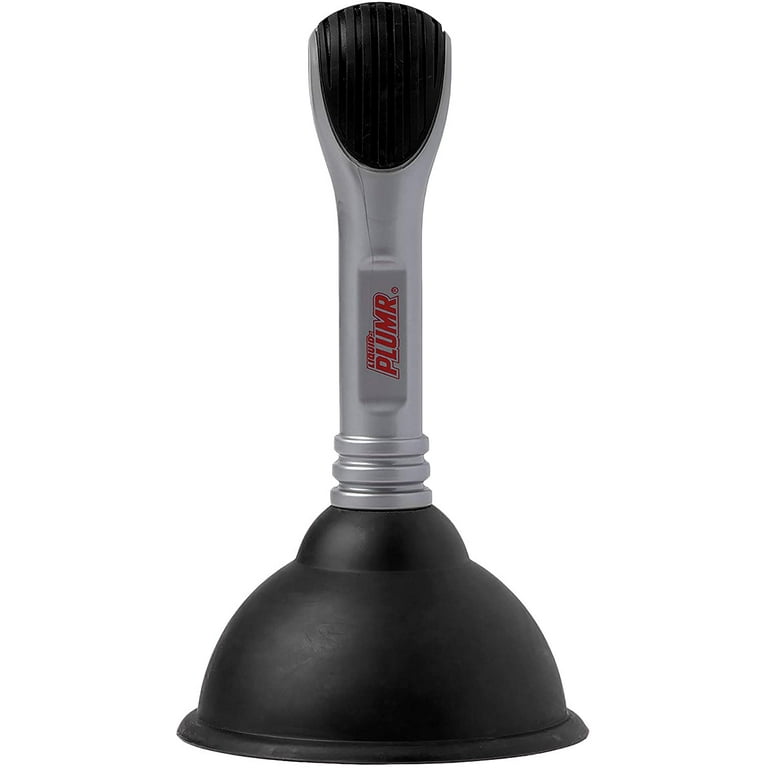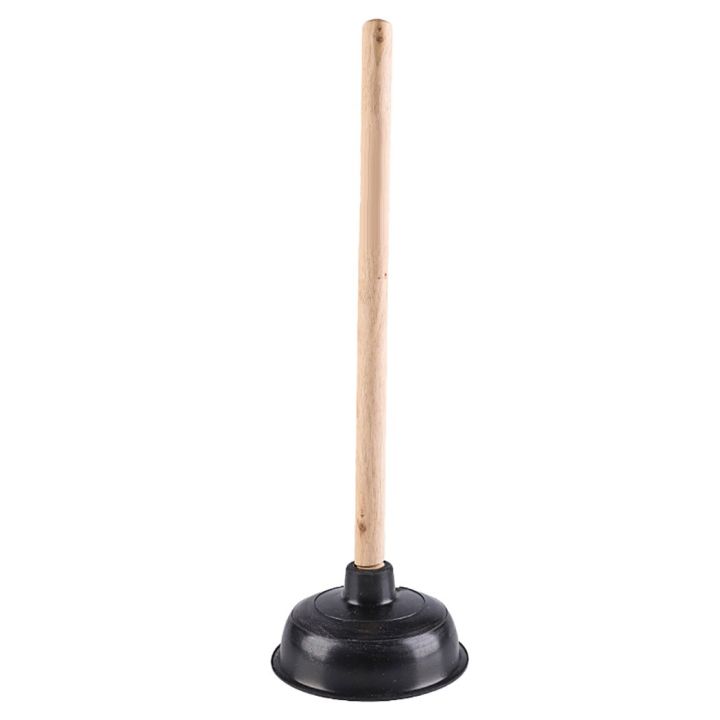Nearly everybody may have their private opinion involving How to Use a Plunger to Unclog a Toilet or Drain.

Introduction
Appropriate upkeep of home drains pipes is important for stopping clogs and making certain smooth water flow. Among the key devices in every house owner's toolkit is the plunger, along with different drain cleansers developed to tackle persistent clogs properly. This short article discovers exactly how to make use of plungers and drain cleansers efficiently to maintain your drains streaming freely.
Section 1: Comprehending Bettors
Kinds of Plungers
There are a number of kinds of plungers available, each designed for various kinds of drains and clogs. One of the most typical types consist of mug plungers, flange bettors, and accordion plungers.
How Plungers Job
Plungers work with the concept of creating stress and suction to dislodge obstructions. When correctly used over a drainpipe, they produce a vacuum that can take out particles or break up blockages.
Picking the Right Plunger
Selecting the appropriate plunger depends on the sort of drain and the nature of the clog. Mug plungers are ideal for sinks and tubs, while flange plungers are much better matched for bathrooms due to their design.
Usual Errors with Plungers
Avoiding these blunders makes sure effective plunging: inappropriate seal around the drainpipe, insufficient pressure, and not clearing surrounding particles.
Section 2: Making Use Of Plungers Efficiently
Prep work
Before diving, make sure the bettor covers the drain entirely and develops a limited seal. Clear any noticeable particles around the drainpipe opening.
Strategy
Begin with gentle plunging motions to develop suction. Rise stress progressively, utilizing a consistent rhythm. Repeat as necessary till the drain clears.
Troubleshooting Tips
If plunging doesn't function, attempt changing the seal, applying petroleum jelly for a better seal, or making use of a various kind of plunger.
Section 3: Recognizing Drainpipe Cleansers
Types of Drainpipe Cleansers
Drain cleansers can be chemical or enzymatic. Chemical cleansers utilize strong chemicals to liquify blockages, while chemical cleaners use all-natural enzymes to break down organic matter.
Just How Drain Cleaning Company Work
Chemical cleansers react with obstructions to dissolve them, while chemical cleansers break down organic products like hair and grease without hurting pipelines.
Safety Factors to consider
Always put on handwear covers and eye security when using chemical drainpipe cleaners. Make certain appropriate ventilation and adhere to maker instructions carefully.
Eco-Friendly Alternatives
Think about using vinegar and cooking soda or enzyme-based cleansers for environment-friendly options that are much safer for pipelines and the atmosphere.
Area 4: Utilizing Drainpipe Cleaners Successfully
Application Techniques
Pour chemical cleaners directly into the drainpipe opening. Permit them to benefit the recommended time prior to flushing with hot water. Chemical cleansers ought to rest overnight.
Safety measures
Prevent mixing various kinds of cleaners, as this can generate poisonous fumes. Never use chemical cleansers together with a plunger, as spilling can occur.
Taking Care Of Stubborn Obstructions
For consistent obstructions, think about making use of a plumbing serpent or calling a professional plumbing professional to prevent damage to pipelines.
Conclusion
In conclusion, understanding just how to make use of plungers and drain cleansers successfully is vital for maintaining healthy and balanced pipes systems. By choosing the right devices and methods, homeowners can deal with minor obstructions and avoid significant plumbing concerns down the line.
How To Properly Use A Plumbing Snake To Clear Drains
When any drain clogs in our home arise, we tend to gravitate toward the plunger and little else. In cases where the plunger and its vacuum-created pressure are not able to clear clogs, many immediately move to harmful chemicals or simply call their plumber to fix the issue.
we’re happy to help with all drain cleaning needs and concerns. This includes informing you on a few other home remedies you may have at your disposal for minor to moderate clogs, one of which is the use of a plumbing snake. Many people have never used one of these before – let’s go over the steps to take when your drain clogs and you have a plumbing snake available.
Attempt Plunger Use
The first step here, as we noted above, should indeed be to grab your plunger when you notice a drain clog and attempt to resolve it this way. If you’re unsure how to use a particular type of plunger, our plumbers can answer any questions you have. If this doesn’t do the trick, however, you move on to the snake.
Locate And Prepare Snake
A plumbing snake is a metal or plastic device that’s generally about a quarter of an inch thick. It’s design with significant extensions, meant to reach down into your clogged drain and push the clog out. Snakes also contain drain augers that will latch onto and push stubborn blockages.
If your plunger doesn’t clear a clog, locate your snake and bring it to the drain in question. We also recommend keeping a bucket nearby to collect the clog once you pull it out, plus we’d advise wearing goggles and possibly protective gloves.
Feed Snake
Once you’re ready to go, feed the snake slowly down the drain, using the crank device it comes with to keep it moving until it finds the clog. Once this happens, much of the clog will be latched onto the coil so you can pull it out, while the rest will simply break up and flow downward.
Detach Debris
Remove the snake slowly from the drain, and once you’ve done so, pick off any debris that’s stuck to the coil. This is another area where wearing gloves is a must.
Flush Drain
Finally, take a few minutes to ensure the snake has done its job correctly. If you’ve been using it on a toilet, flush the toilet a couple times and make sure everything flows well. If you’ve used it on a different drain, flush it with some room temperature water.
https://www.mybuddytheplumber.com/blog/how-to-properly-use-a-plumbing-snake-to-clear-drains/

Application Techniques
Pour chemical cleaners directly into the drainpipe opening. Permit them to benefit the recommended time prior to flushing with hot water. Chemical cleansers ought to rest overnight.
Safety measures
Prevent mixing various kinds of cleaners, as this can generate poisonous fumes. Never use chemical cleansers together with a plunger, as spilling can occur.
Taking Care Of Stubborn Obstructions
For consistent obstructions, think about making use of a plumbing serpent or calling a professional plumbing professional to prevent damage to pipelines.
Conclusion
In conclusion, understanding just how to make use of plungers and drain cleansers successfully is vital for maintaining healthy and balanced pipes systems. By choosing the right devices and methods, homeowners can deal with minor obstructions and avoid significant plumbing concerns down the line.
How To Properly Use A Plumbing Snake To Clear Drains
When any drain clogs in our home arise, we tend to gravitate toward the plunger and little else. In cases where the plunger and its vacuum-created pressure are not able to clear clogs, many immediately move to harmful chemicals or simply call their plumber to fix the issue.
we’re happy to help with all drain cleaning needs and concerns. This includes informing you on a few other home remedies you may have at your disposal for minor to moderate clogs, one of which is the use of a plumbing snake. Many people have never used one of these before – let’s go over the steps to take when your drain clogs and you have a plumbing snake available.
Attempt Plunger Use
The first step here, as we noted above, should indeed be to grab your plunger when you notice a drain clog and attempt to resolve it this way. If you’re unsure how to use a particular type of plunger, our plumbers can answer any questions you have. If this doesn’t do the trick, however, you move on to the snake.
Locate And Prepare Snake
A plumbing snake is a metal or plastic device that’s generally about a quarter of an inch thick. It’s design with significant extensions, meant to reach down into your clogged drain and push the clog out. Snakes also contain drain augers that will latch onto and push stubborn blockages.
If your plunger doesn’t clear a clog, locate your snake and bring it to the drain in question. We also recommend keeping a bucket nearby to collect the clog once you pull it out, plus we’d advise wearing goggles and possibly protective gloves.
Feed Snake
Once you’re ready to go, feed the snake slowly down the drain, using the crank device it comes with to keep it moving until it finds the clog. Once this happens, much of the clog will be latched onto the coil so you can pull it out, while the rest will simply break up and flow downward.
Detach Debris
Remove the snake slowly from the drain, and once you’ve done so, pick off any debris that’s stuck to the coil. This is another area where wearing gloves is a must.
Flush Drain
Finally, take a few minutes to ensure the snake has done its job correctly. If you’ve been using it on a toilet, flush the toilet a couple times and make sure everything flows well. If you’ve used it on a different drain, flush it with some room temperature water.
https://www.mybuddytheplumber.com/blog/how-to-properly-use-a-plumbing-snake-to-clear-drains/

As a keen person who reads about , I imagined sharing that piece was valuable. Do you know about another person who is fascinated about How to Unclog Your Sink with a Plunger? Do not hesitate to share it. We cherish reading our article about Here's How to Correctly Use a Toilet Plunger.
Schedule Services